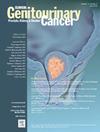Preliminary Assessment of Cone Beam CT Guided Percutaneous Cryoablation for CT1A Renal Cell Carcinoma: A Relatively Novel and Underutilized Technique
IF 2.7
3区 医学
Q3 ONCOLOGY
引用次数: 0
Abstract
Introduction
To assess the efficacy and safety of cone beam CT guided percutaneous cryoablation (CBCT guided PCA) for the treatment of cT1a renal tumors by evaluating oncological outcomes and postoperative complication risk, in comparison to conventional CTguided PCA and laparoscopic cryoablation (LCA) using long-term follow-up data from a single-center cohort.
Methods
A retrospective analysis of 3 cryoablation (CA) techniques was conducted at our institution from December 2006 to February 2023. A total of 77 (32.6%) patients underwent CBCT guided PCA, 34 (14.4%) received CT guided PCA, and 125 (53%) were treated with LCA. Primary outcomes included recurrence-free survival (RFS) and overall complication rate (OCR). RFS was calculated using the Kaplan-Meier method. Univariate and multivariate Cox proportional hazards analyses assessed the impact of specific baseline characteristics on recurrence risk.
Results
19 (8.1%) patients exhibited local disease recurrence during follow-up. Recurrence occurred in 7 (9.1%), 4 (11.8%), and 8 (6.4%) patients in the CBCT guided PCA, CT guided PCA, and LCA group, respectively (P = .549). The overall RFS was 90.1%, 88.2%, and 93.6% for CBCT guided PCA, CT guided PCA, and LCA, respectively. RFS did not differ significantly between the 3 groups (Log-rank for trend: P = .083). No significant difference in overall recurrence (OCR) was observed among the groups (P = .200).
Conclusion
CBCT guided PCA shows higher overall RFS in comparison to CT guided PCA and thereby is an effective and safe alternative for the treatment of small renal masses.
锥形束CT引导下经皮冷冻消融治疗CT1A肾细胞癌的初步评估:一种相对新颖但未充分利用的技术
导读:目的利用单中心队列的长期随访数据,评估锥束 CT 引导下经皮冷冻消融术(CBCT 引导下 PCA)治疗 cT1a 肾肿瘤的疗效和安全性,与传统 CT 引导下 PCA 和腹腔镜冷冻消融术(LCA)相比,评估肿瘤学结果和术后并发症风险。共有 77 例(32.6%)患者接受了 CBCT 引导的 PCA 治疗,34 例(14.4%)接受了 CT 引导的 PCA 治疗,125 例(53%)接受了 LCA 治疗。主要结果包括无复发生存期(RFS)和总并发症发生率(OCR)。RFS 采用 Kaplan-Meier 法计算。单变量和多变量考克斯比例危险度分析评估了特定基线特征对复发风险的影响。CBCT 引导 PCA 组、CT 引导 PCA 组和 LCA 组分别有 7 例(9.1%)、4 例(11.8%)和 8 例(6.4%)患者复发(P = .549)。CBCT 引导 PCA、CT 引导 PCA 和 LCA 的总体 RFS 分别为 90.1%、88.2% 和 93.6%。三组之间的 RFS 无明显差异(趋势对数秩:P = 0.083)。结论CBCT引导下的PCA与CT引导下的PCA相比显示出更高的总体RFS,因此是治疗肾脏小肿块的一种有效而安全的替代方法。
本文章由计算机程序翻译,如有差异,请以英文原文为准。
求助全文
约1分钟内获得全文
求助全文
来源期刊

Clinical genitourinary cancer
医学-泌尿学与肾脏学
CiteScore
5.20
自引率
6.20%
发文量
201
审稿时长
54 days
期刊介绍:
Clinical Genitourinary Cancer is a peer-reviewed journal that publishes original articles describing various aspects of clinical and translational research in genitourinary cancers. Clinical Genitourinary Cancer is devoted to articles on detection, diagnosis, prevention, and treatment of genitourinary cancers. The main emphasis is on recent scientific developments in all areas related to genitourinary malignancies. Specific areas of interest include clinical research and mechanistic approaches; drug sensitivity and resistance; gene and antisense therapy; pathology, markers, and prognostic indicators; chemoprevention strategies; multimodality therapy; and integration of various approaches.
 求助内容:
求助内容: 应助结果提醒方式:
应助结果提醒方式:


